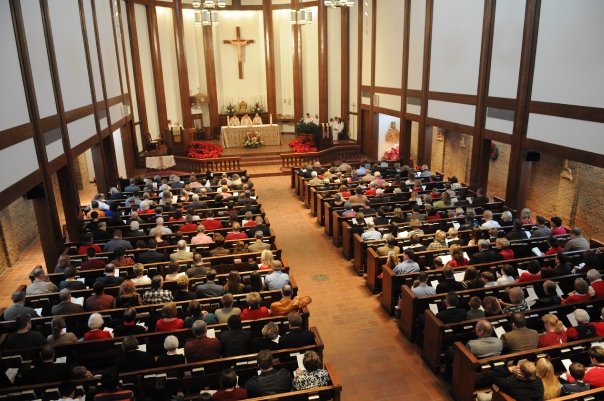 Ever get the feeling there's more to the story than shows up in print?
Yes, that was a rhetorical question.
Ever get the feeling there's more to the story than shows up in print?
Yes, that was a rhetorical question.
Given constraints of time (overworked reporters and editors) and space (cramped news holes), that's probably inevitable. Life is complicated, after all, while typical daily news reporting relies on simple formulas (mostly out of necessity). He said. She said. The end.
Or in the case of some news stories: She said. She said. She said. She said. She said.
When I read a Dallas Morning News story on a lesbian couple whose 4-year-old daughter was denied admission to an Anglican preschool, it just felt one-sided to me:
On the surface, St. Vincent's Cathedral School of Bedford seemed like a perfect fit for Tracy and Jill Harrison's 4-year-old daughter.
It was a good school that would provide much more than your average day care center, Jill Harrison said. It was close to their home, and the hours matched the family's busy schedule.
The couple also thought that, as nondenominational Christians, their values would align with those taught at the school.
But there turned out to be a wide disparity in beliefs.
Less than one week before young Olivia's first day -- and days after her teacher called to welcome her -- the Harrisons learned that their lifestyle as a married lesbian couple made them a bad fit for St. Vincent's. Olivia was no longer welcome.
Keep reading, and the piece includes both sides. But it takes one side, if the amount of space devoted to direct quotes is any indication. Full direct quotes from Jill Harrison comprise five paragraphs of the story, amounting to 184 total words straight out of her mouth.
We hear directly -- and fully -- from the school's dean in only one paragraph. He explains, in 39 words, why the couple's child was not considered a "good fit" for St. Vincent's:
"A big part of that reason is that we would be teaching values and morals contrary to what the child would be learning at home, and this would both undercut her mother's authority and create confusion for the child," Reed said.
It seems that the reporter might have asked how that position meshes with this statement on the school's website:
Founded in 1963, St. Vincent's has educated students for over four decades. St. Vincent's School welcomes students from all religious backgrounds. (emphasis mine) Grounded within the great educational tradition of Anglican Christianity, St. Vincent's is intentional about helping each student cultivate his or her spiritual life. Our goal is to produce graduates who will honor their Creator, not only with well-developed minds and bodies, but also with the choices they make in their lives.
The communications director for what remains of the Episcopal Diocese of Fort Worth gets more space than the school dean -- a 53-word direct quote -- to tout the Episcopal Church's progressive views on homosexuality over the breakaway Anglicans' more traditional doctrinal positions:
"They chose to elevate people's decisions about who they love into a matter of creedal importance, and obviously many people didn't agree with that, but felt we could differ on that issue and still have many things in common," she said. "We didn't feel that differences in sexuality were worth splitting a church over, and obviously they did."
To its credit, the piece highlights what seems to be the most important aspect of this dispute: Gay rights and religious freedom are on a collision course:
Civil rights laws on behalf of the Harrisons could prevail over the school's right as a private institution to pick its students, Bloom said. But without a specific federal statute protecting the rights of the Harrisons as a married homosexual couple or their children, the school probably faces no legal repercussions.
"Basically, you end up with constitutional issues on both sides," Bloom said. "On the one hand you have freedom of religion and freedom of association, and on the other hand you have freedom from discrimination."
(Tmatt explored this issue in a May post on a similar case involving same-sex parents and a Catholic school.)
But for all its focus on the lesbian couple, the News story fails to mention a fact (assuming it's a fact) included in reports by CNN and the Fort Worth Star-Telegram on the same dispute: The couple is separated and divorcing.
According to the Star-Telegram, the school believed that Tracy Harrison was a man, and Jill Harrison did not feel compelled to disclose the same-sex nature of the relationship. The News, meanwhile, gives no indication that the relationship is over.
That seems like a relevant fact, right? Then again, it complicates the easy narrative.
Speaking of the elementary nature of reporting from a newspaper once renowned for its religion writing, consider these two paragraphs:
Two years after the split, the St. Vincent's congregation still sits on the Episcopal Diocese of Fort Worth's property and uses the Episcopal Church's name, Sherrod said.
She mentioned that the Episcopal Church "is in litigation over these matters" in Tarrant County.
Is in litigation over these matters. You're kidding. I had no idea.
